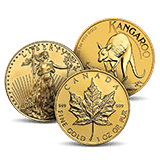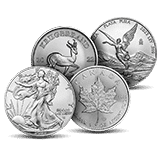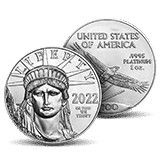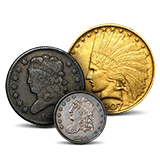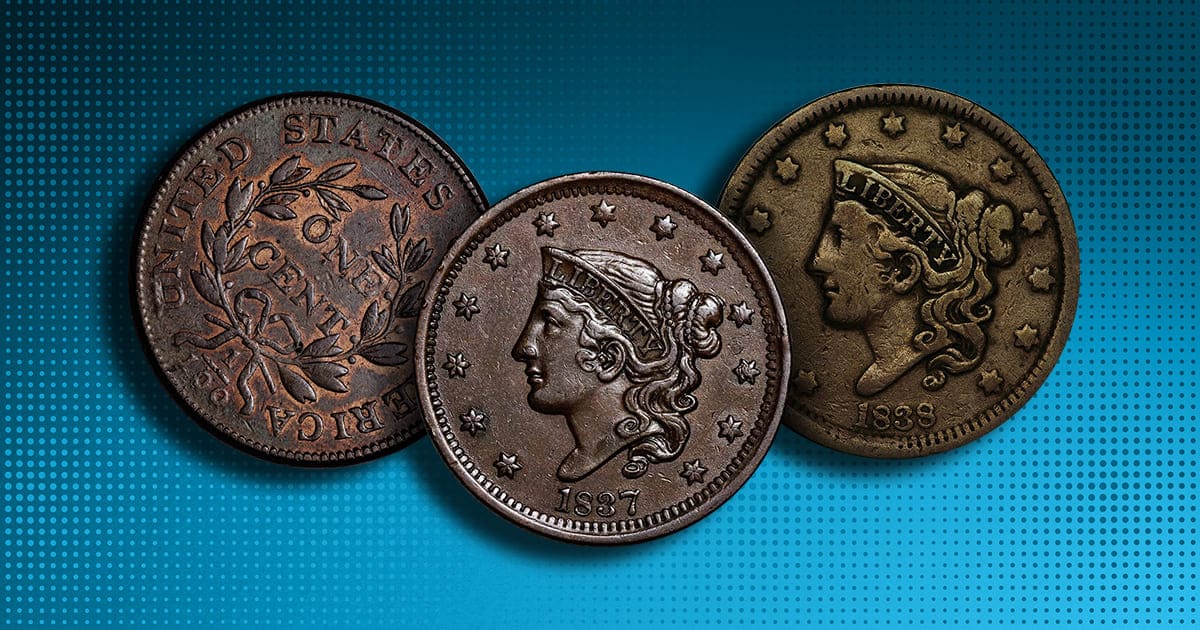
The Value of a Rotated Die Error Coin
The value of a rotated die error depends on the degree of rotation, the condition, and issue of your Large Cent. Based on coins for sale today, a 45-degree rotated Large Cent could be worth $9 to $700 depending on the type, condition, and what a buyer will pay.
Rotated die errors are most common on the Matron Head Large Cents. If you have a Matron Head with a 45-degree rotation, the error might add a little bit of monetary value. If it is in good condition and you want to sell or insure your Large Cent, it could be worth the grading cost.
What is a Rotated Die Error?
U.S. coinage is designed with coin alignment. The coin can be flipped vertically to reveal the reverse facing up in near-perfect alignment. Coin alignment is the opposite of medallic alignment, which orients both obverse and reverse in the same direction.
Rotated die errors are the outcome of a mint die being improperly oriented as the design relates to the other side of the coin.
Sometimes mint dies are installed at an angle or begin to tilt toward one side over time. When the coin is struck, one side will be angled relative to the design on the opposite face. Rotated die errors are measured in degrees of rotation.
What Causes a Die Rotation Error?
- The die has been installed in the wrong direction relative to its opposite die.
- The die works itself loose in its recess and rotates.
- The shank of the die has been ground in the wrong orientation relative to the design of the die’s face, leading to incorrect installation.
Stable Rotation Errors and Dynamic Rotation Die Errors
Rotated die errors can be either stable or dynamic. Stable errors result in coins that all demonstrate the same angle of rotation. Dynamic die rotation errors produce coins with multiple rotation angles as the die moves throughout the striking process.
Is the Reverse or the Obverse Rotated?
In the instance of a stable, in-collar rotation error, it is not possible to determine which die has rotated. This is because the obverse and reverse will be struck correctly but are not in coin alignment.
Dynamic rotation errors and compound-rotated errors, which combine at least one other minting error, can make it possible to determine which die has rotated.
The Greater the Rotation, the Greater the Value
Die rotations of 5-8 degrees are said to be inside the Mint tolerance margin. Rotations of 15 degrees or less are not considered valuable, but coins with angles over 15 may be. NGC does not recognize rotated die errors lower than 15 degrees.
Error coins with rotation angles of 90 degrees and above can be highly valuable. Rotated die errors of 180 degrees demonstrate medallic alignment and are rare.

